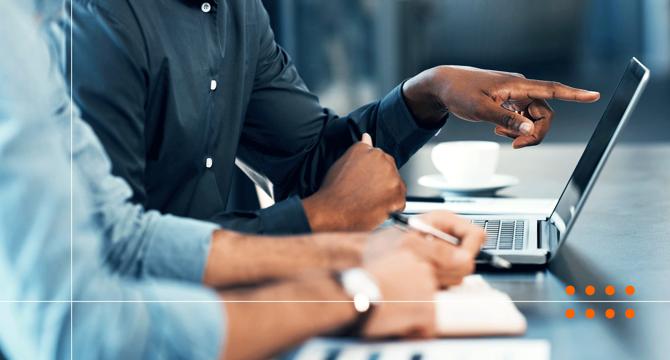Devops News
Dev
426

Image Credit: Dev
100 DevOps Interview Questions and Answers for 2025
- This comprehensive compilation of DevOps interview questions and answers for 2025 is designed to help individuals at all levels of experience with their job interviews in the DevOps field.
- Topics covered include the basics of DevOps, tools for DevOps in 2025, orchestration and containerization with Docker and Kubernetes, observation and monitoring tools, infrastructure as code, DevOps system design and architecture, cloud integration in DevOps, automation and CI/CD, security and cost management, and more.
- The article provides insights on fundamental DevOps concepts, such as automation, continuous integration, and delivery, along with detailed explanations of tools like Git, Jenkins, Kubernetes, Prometheus, and Terraform.
- It also touches upon essential practices like version control, CI/CD, orchestration, security, and monitoring, emphasizing the significance of DevOps in contemporary software engineering and the integration of cloud computing into DevOps practices.
- The article outlines the significance of automation in DevOps processes, the differences between CI, CD, and Agile methodologies, and the role of observability in debugging and system analysis in DevOps environments.
- Furthermore, it delves into DevSecOps practices, cloud-native infrastructure, Kubernetes concepts, containerization with Docker, and common tools and strategies for CI/CD pipelines, emphasizing the importance of integrating security measures early in the development lifecycle.
- The article also includes behavioral questions related to teamwork, incident response, communication among teams, and personal development strategies for success in DevOps roles, along with recommended resources and certifications for continuous learning and skill improvement.
Read Full Article
25 Likes
Hackaday
426

Image Credit: Hackaday
Self-Hosting a Cluster on Old Phones
- Old smartphones can be repurposed into a computing cluster by installing the postmarketOS Linux distribution.
- The phones in the cluster can be accessed via ssh and used to run Kubernetes for hosting self-hosted services.
- Using old smartphones that support postmarketOS can save money compared to buying a Raspberry Pi for the same purpose.
- Repurposing old smartphones is a practical way to utilize their computing power and resources.
Read Full Article
25 Likes
The New Stack
293

Image Credit: The New Stack
Google Kubernetes Engine Customized for Faster AI Work
- Google Cloud enhanced Google Kubernetes Engine (GKE) for streamlined AI workloads at GoogleNext conference.
- Hosted GKE-based supercomputing service with AI workload focus unveiled by Google Cloud.
- Customers showcasing 900% growth in the use of AI-oriented GPUs and TPUs in the past year.
- 15 top GKE customers are now utilizing the service for AI and ML workloads.
- AI expected to generate over $200 billion in annual infrastructure cloud services by 2028.
- GKE enhancements include support for Kubernetes standard Gateway API Inference Extension.
- Introduction of GKE supercomputing service, Cluster Director, for large AI modeling jobs.
- Gemini AI-based chat client, Gemini Cloud Assist Investigations, for debugging on GKE admin dashboard.
- Public preview of GKE Inference Gateway for intelligent routing and load balancing for AI inference workloads.
- Extension offers benefits like end-to-end observability, workload isolation, and optimized routing for multiple models.
Read Full Article
17 Likes
Dev
293

Image Credit: Dev
🧪 Build a Local Ansible Lab with Docker (No VMs Needed)
- A lightweight Ansible lab has been created using Docker, eliminating the need for virtual machines or cloud resources.
- The lab consists of three Ubuntu containers as managed nodes with SSH enabled and Python pre-installed for Ansible modules.
- The setup includes a Docker network named ansible and port forwarding for SSH access from the local machine.
- To try it out, clone the repository, start the lab with Docker Compose, SSH into a node, and use Ansible to ping all hosts.
Read Full Article
17 Likes
Discover more
- Programming News
- Software News
- Web Design
- Open Source News
- Databases
- Cloud News
- Product Management News
- Operating Systems News
- Agile Methodology News
- Computer Engineering
- Startup News
- Cryptocurrency News
- Technology News
- Blockchain News
- Data Science News
- AR News
- Apple News
- Cyber Security News
- Leadership News
- Gaming News
- Automobiles News
Dev
128

Image Credit: Dev
Legacy, Meet Cloud Native: Lessons from Blending COBOL, K8s, and ML
- The article discusses the lessons learned from combining COBOL, Kubernetes, and SageMaker for modernizing legacy systems.
- Architectural Recap: The article outlines the architecture of running COBOL on Kubernetes with structured logging, PostgreSQL sink, and integration with SageMaker machine learning models.
- Key Lessons Learned: The article highlights key lessons such as containerizing COBOL instead of rewriting, leveraging structured logs for analytics, the compatibility of legacy systems with machine learning, and the effectiveness of Kubernetes for handling legacy workloads.
- Gotchas to Watch Out For: The article mentions potential challenges in parsing COBOL errors, managing storage permissions in Kubernetes with Amazon EFS, monitoring and addressing model drift in machine learning, and managing job bloat in Kubernetes.
Read Full Article
7 Likes
Solarwinds
394

Image Credit: Solarwinds
The True Cost of ITSM: On-Prem vs. SaaS
- On-premises ITSM solutions entail ongoing infrastructure investments, maintenance, and staffing, whereas SaaS shifts those responsibilities to the provider, resulting in a system that is always up-to-date and secure.
- While on-premises solutions may offer full control and one-time licensing fees, they come with high upfront and ongoing costs, resource-intensive maintenance, and scalability challenges.
- The total cost of ownership (TCO) analysis indicates that SaaS is a financially competitive and strategic choice for businesses seeking to reduce IT overhead and streamline operations.
- On-premises solutions involve significant additional expenses beyond just the initial software licensing fee, including hardware purchases, infrastructure setup, IT staff expenses, and maintenance costs.
- SaaS eliminates the need for costly infrastructure investments, offers automatic updates and security management, scalability, faster deployment, built-in redundancy, and accessibility from anywhere.
- SaaS users benefit from lower initial costs, automatic security updates, scalability, faster deployment, redundancy, and accessibility, though they must consider ongoing subscription costs and potentially reduced customization options.
- SaaS solutions like SolarWinds Service Desk offer a cost-effective alternative to on-premises ITSM, providing financial savings, reduced complexity, improved security, and enhanced scalability.
- The financial difference between on-premises and SaaS solutions is substantial, with SaaS often providing more value through automatic maintenance, scalability, security, innovation, and user experience improvements.
- In conclusion, SaaS emerges as a more predictable and low-cost option compared to on-premises solutions when considering factors like hardware, maintenance, staffing, and hidden costs.
- The transition from Web Help Desk® to Service Desk is facilitated by Migration Documentation, allowing customers to seamlessly adopt a cost-effective and modern ITSM solution.
Read Full Article
23 Likes
Dev
339

Image Credit: Dev
Tariffs, Toolchains, and Tech Debt: Why Blocking the Flow Never Ends Well
- Blocking the flow of a complex, interconnected ecosystem limits innovation and hampers progress.
- Artificial restrictions in software, economies, or teams lead to bottlenecks, tech debt, and frustrated engineers.
- Obstruction is not a successful strategy; it slows down systems, makes them more fragile, and hinders growth.
- Creating barriers can result in mediocrity and cause people to seek better alternatives.
Read Full Article
20 Likes
VentureBeat
117

Image Credit: VentureBeat
Google’s new Agent Development Kit lets enterprises rapidly prototype and deploy AI agents without recoding
- Google has announced the launch of its Agent Development Kit (ADK) to simplify the creation of AI agents.
- ADK allows users to build an AI agent in under 100 lines of code and supports the Model Context Protocol (MCP).
- Google also introduced Agent Engine, a managed runtime dashboard for production usage.
- Google's ADK and other agentic AI offerings put the company in competition with other agent providers like OpenAI and Amazon.
Read Full Article
7 Likes
Amazon
13

Image Credit: Amazon
Speaking Your Language: Expanded language support in Amazon Q Developer
- Amazon Q Developer has announced expanded language support to meet the needs of a global software development community.
- Developers can now have natural conversations and discuss complex technical concepts in their preferred language.
- The expanded support includes providing complete responses, suggesting follow-up questions, and maintaining technical accuracy while adapting to linguistic nuances.
- The expanded language support is available in the IDE and CLI, with support for AWS Management Console coming soon.
Read Full Article
Like
Devopsonline
412

Image Credit: Devopsonline
How to create safe payments and avoid fraud online
- Fraud is becoming more sophisticated as cybercriminals develop increasingly complex methods to trick their victims.
- Social media scams are widespread and becoming commonplace.
- The rapid acceleration of AI can help prevent fraud by making it easier to detect and flag suspicious activities in real-time before they can affect an individual.
- A key strategy to enhancing online payments is to turn on multi-factor authentication on platforms where individuals are making a purchase.
Read Full Article
24 Likes
Dev
238

Image Credit: Dev
"How we automated ServiceNow change approvals using GPT-4 and AWS APIs."
- Automating ServiceNow change approvals using AI-driven LLMs and AWS APIs can enhance efficiencies in change management processes in IT operations.
- Benefits of automating change management include faster deployments, consistency in compliance, risk reduction, and cost efficiency.
- Use cases for AI-powered change management span cloud infrastructure, networking, CI/CD pipelines, and database/storage changes.
- Key components of the solution architecture include ServiceNow Change Module, LLM analysis, Cloud APIs, CI/CD Integration, and Approval Workflow.
- Implementation steps involve training the LLM, integrating with ServiceNow, connecting to cloud APIs, setting up guardrails, and continuous monitoring and refinement.
- Challenges like false positives/negatives, regulatory compliance, and integration complexity can be mitigated by starting small, maintaining human oversight, and using pre-built connectors.
- The end-to-end AI-powered change management workflow includes high-level architecture diagrams and detailed workflow steps involving AI agents, integration points, and feedback loops.
- AI agents can be hosted in the cloud (GPT-4, Bedrock), on-premises (Llama 3, Claude), or in a hybrid setup, each with its pros and cons.
- Key integration points include ServiceNow API, AWS/Azure APIs, CI/CD tools, and monitoring tools for seamless automation of change approvals.
- AI-powered change management streamlines processes, reduces manual work, accelerates deployments, and integrates LLMs to automate approvals while involving humans for critical decisions.
- The article emphasizes piloting AI approvals for non-critical changes, measuring savings, and scaling for more complex workflows in IT change management.
Read Full Article
14 Likes
Medium
431

Image Credit: Medium
Code in Motion: A Journey Through Software Development Methodologies.
- Software Development Methodologies like Agile, DevOps, Microservices, and Serverless are explored in the article, highlighting their impact on software development.
- Agile emphasizes quick work, clear goals, and small wins that build trust among team members through short cycles and frequent meetings.
- DevOps focuses on collaboration and automation, bridging gaps between teams to fix code quickly and efficiently.
- Microservices involve splitting work into small, clear parts that join to form a cohesive code base, emphasizing the importance of individual tasks.
- Serverless promotes lean, scalable, and light code that runs without heavy tasks, freeing teams to work on clear, fast steps.
- Integrating Agile, DevOps, Microservices, and Serverless practices leads to clear, strong code bases as different methodologies complement each other.
- The article emphasizes the importance of teamwork, smart builds, and the need for open discussion and sharing of ideas in software development.
- Looking ahead, the article envisions a future where new tools and methods will continue to enhance software development with a focus on trust, clear work, and bright ideas.
- The call to action encourages readers to engage in discussions, share their views, and contribute to the ongoing evolution of software development practices.
- The article concludes by emphasizing the importance of keeping the code alive through trust, clear steps, and the collaborative efforts of all team members.
- Overall, the article serves as an invitation for readers to participate in shaping the future of software development by fostering innovation, trust, and shared knowledge.
Read Full Article
25 Likes
Dev
32

Image Credit: Dev
The Rise of Multi-Cloud Strategies: Best Practices for 2025
- Multi-cloud strategies are becoming increasingly essential in the DevOps landscape to enhance resilience, avoid vendor lock-in, and optimize performance.
- Multi-cloud involves using multiple cloud providers like AWS, Azure, Google Cloud, and IBM Cloud to ensure flexibility, risk mitigation, and cost optimization.
- Key components of multi-cloud strategies include cloud orchestration, networking & security, CI/CD pipelines, and observability & monitoring.
- The benefits of multi-cloud strategies include interoperability, redundancy & resilience, scalability, vendor independence, cost optimization, enhanced disaster recovery, improved performance, and regulatory compliance.
Read Full Article
1 Like
Dev
325

Image Credit: Dev
Stop giving hackers the easy button
- APT attacks like the Salt Typhoon target vulnerabilities to gain access and cover their tracks to carry out attacks like infrastructure disruption or IT supply chain compromise.
- To prevent APT attacks, implementing practices such as strong access control, endpoint protection, user education on phishing, monitoring for suspicious activity, and vulnerability management is crucial.
- Neglecting vulnerability management can lead to data breaches with an average cost of $4.88M, ransomware attacks, and non-compliance with regulations like HIPAA, PCI DSS, and GDPR.
- Managing vulnerabilities requires regular attention and action, akin to tending a garden with weeding as a necessary chore and complementary practices like companion planting for cybersecurity.
- It is important to celebrate small victories in cybersecurity efforts to maintain motivation and acknowledge progress in preventing security incidents.
- Challenges in addressing vulnerabilities include fragmented data from scanning tools, irrelevant risk scores, and difficulties in assigning responsibilities for fixes.
- Addressing vulnerabilities promptly requires finding tools tailored to the company's technical stack, and new tools like AppMap, DryRun Security, and 3Mór are emerging to assist in vulnerability remediation.
- Creating a sustainable approach to vulnerability management involves finding a supportive community, contributing to open source projects, setting milestones, and recognizing and celebrating prevention efforts.
- Former NSA Director Gen Nakasone emphasizes the importance of cybersecurity hygiene, patching, and finding effective solutions to reduce the growing attack surface, advocating for the adoption of DevSecOps practices.
Read Full Article
19 Likes
Dev
385

Image Credit: Dev
I made a GitHub Actions ebook, its totally free, would love your feedback!
- GitHub user has created a new GitHub Actions ebook focused on cloud, infrastructure, DevOps, and platform engineering.
- The ebook, titled 'GitHub Actions by Example', aims to make CI/CD less intimidating and more fun with real-world, example-based workflows.
- The guide covers topics such as creating workflows from scratch, running tests, deploying services, setting up reusable workflows, and writing custom actions.
- The creator is seeking feedback from readers to improve the guide and make it more helpful for beginners.
Read Full Article
23 Likes
For uninterrupted reading, download the app